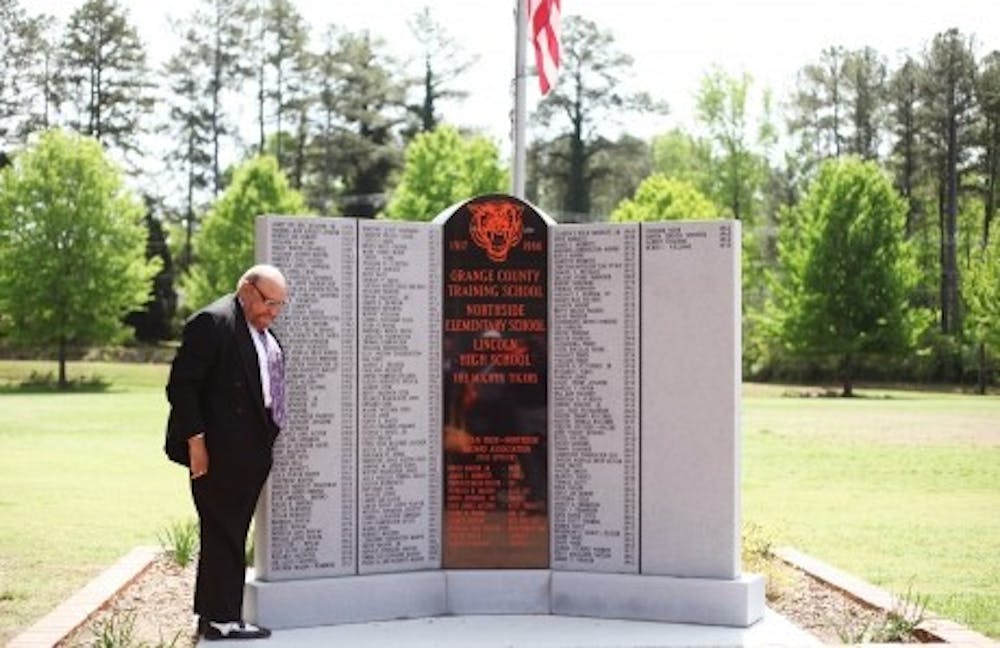“We didn’t have uniforms, we wore white pants and black jackets and white shoes,” said Battle, who played the bell at the band until her graduation in 1951. “We were more outstanding than university bands. Everybody came by to see us.”
The oldest of four brothers, Mason remembers devoting most of his free time to homework.
“My mom and my dad used to talk about us, all four of us getting an education, and they used to tell us, ‘We don’t know where y’all going to school, but you’re going somewhere,’” said Mason, who now holds a Master’s Degree in psychology from North Carolina Central University. His brothers also graduated from college.
At the time, most educated Black students in Chapel Hill worked as teachers, who, Mason said, inspired students to aim higher in a time when Jim Crow Laws were ubiquitous in the American South.
During the day, his father worked as support staff for a fraternity and at night as a waiter for a restaurant. His mother ironed the fraternity members’ shirts and then worked at a bookstore, from where she rented books to share with the tight-knit Black community of Chapel Hill.
Mason claims his teachers and neighbors as his extended family.
“Our community epitomized the fact that it did takes a village to raise a child,” Mason said. “We had our churches, our communities, our schools. They all acted as one entity. Everyone had the best interest of the students at heart. It was just really a fantastic time.”
One Sunday in 1954, as he was leaving church, Mason saw a small crowd gathered around one of his teachers. She was explaining the news of the Brown vs. Board of Education decision.
“She was so excited telling all the parents about the fact that no longer are we going to segregated schools, about the wonderful benefits that we’d be getting,” he said.
But it wasn’t until 1961 when the first student of color, then 10-year-old Stanley Vickers, started the seventh grade at Chapel Hill Junior High, an all-white school.
“It didn’t bother me to be around (white people),” he said. “I knew the hostilities. At that time you knew were the line was.”
In 1959 Vicker’s parents, supported by the NAACP, filed a lawsuit to have him attend Carrboro Elementary, the school closest to his home, after the school board voted against their request to transfer. Before, he had to walk about 6 miles to school every day.
To get the day's news and headlines in your inbox each morning, sign up for our email newsletters.
In August of 1961, a federal judge ruled in favor of his admission, citing he had been denied “substantial constitutional rights,” according to a Chapel Hill Weekly archive.
That first year, he was the only African-American in all of his classes, although there were two other Black students in his school.
“In the hallways, I would be pushed around, books thrown out of my hand,” he said. “There was lots of name calling, and that went on for longer than the first year.”
Eventually Vickers made a few friends, which he said helped make his transition smoother.
“They obviously couldn’t have a great deal of interaction with me at school because of fear of recrimination, retribution from their friends,” he said.
He then graduated Chapel Hill High School in 1966, the year Lincoln High School closed down, and Chapel High High School reopened as an integrated school on High School Road.
He remembers his time in the Marine Corps and now compares his experience to his time in the military.
“It made me stronger,” Vickers, now 69, said. “It taught me a lot about people. It taught me about dealing with people.”
city@dailytarheel.com




